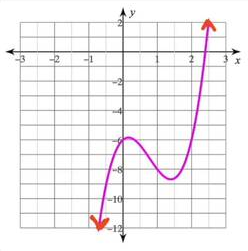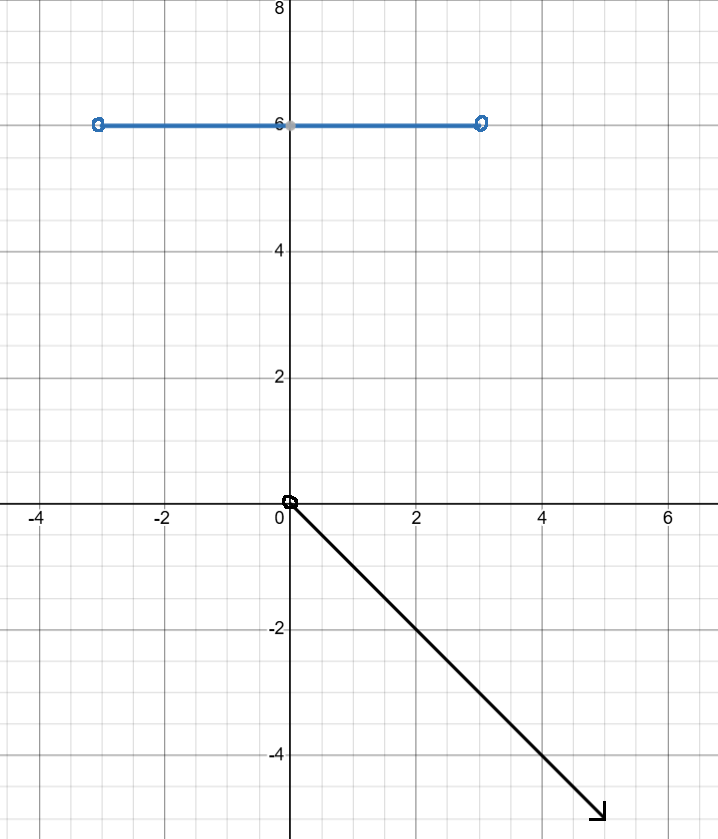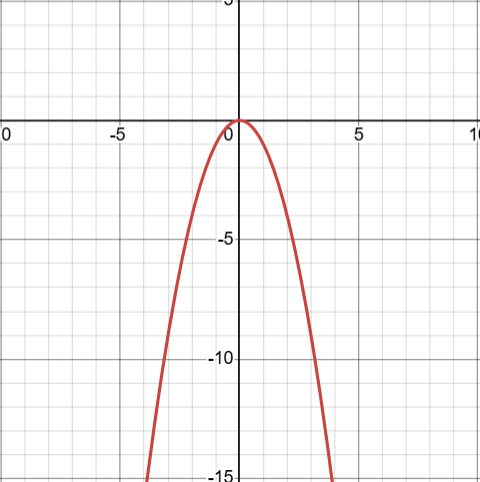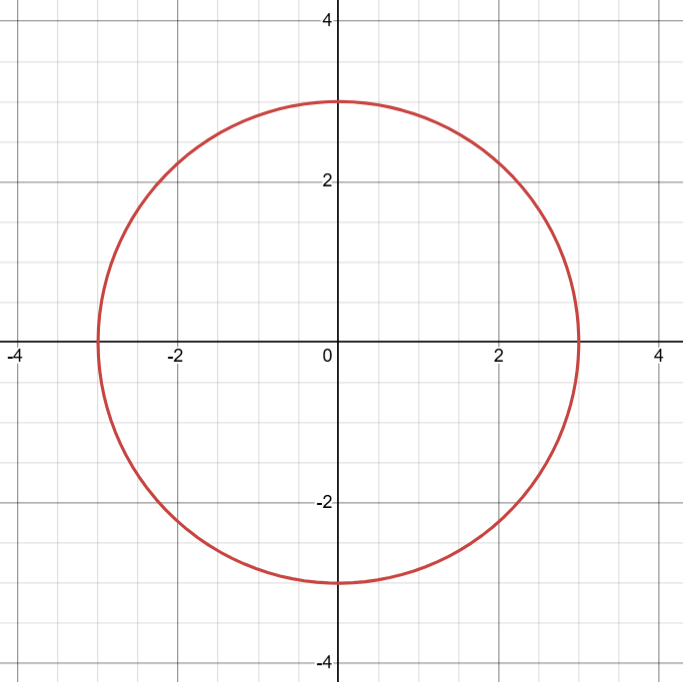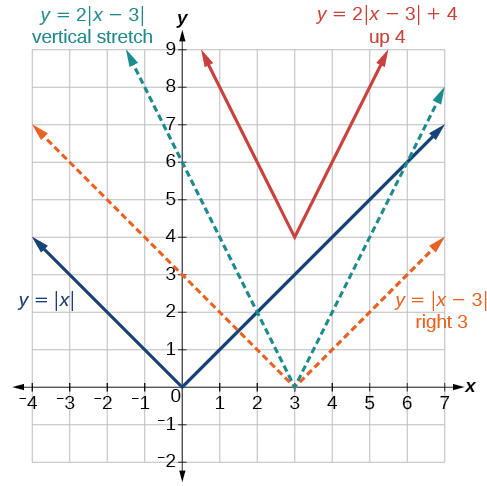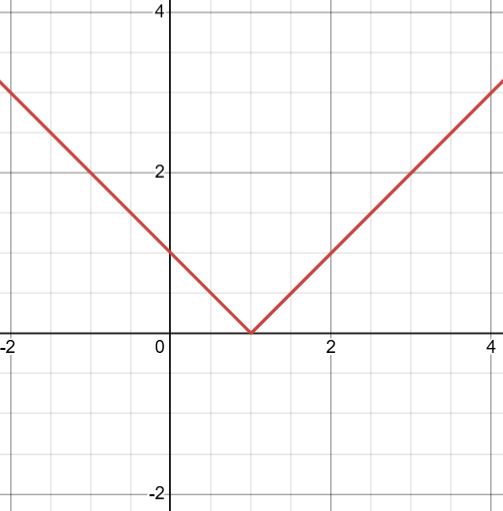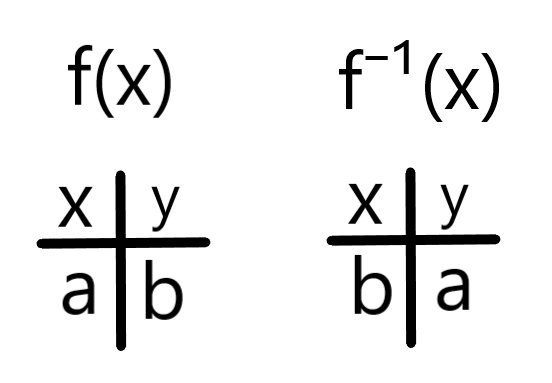These are my complete notes for Precalculus, covering such topics as Piecewise Functions, Composite Functions, Complex Fractions, Inverse & Parent Functions (in greater detail), Logarithms, Degrees and Radians, Trigonometry, Sinusoidal Waves, and more.
I color-coded my notes according to their meaning - for a complete reference for each type of note, see here (also available in the sidebar). All of the knowledge present in these notes has been filtered through my personal explanations for them, the result of my attempts to understand and study them from my classes and online courses. In the unlikely event there are any egregious errors, contact me at jdlacabe@gmail.com.
Summary of Precalculus (Complete)
VI. Rational Equations.
# Cross Multiply Multiplying two fractions diagonally - can be done when two fractions with variables are equivalent.
# Least Common Multiple The smallest number that two or more numbers can divide into evenly.
#
Rule .
Cross Multiplying is to be done in situations where there are two (2) fractions that are equal, such as (3 / (x + 1)) = (9 / (4x + 5)). This only works when both variables are by themselves.
#
Rule .
Another means of finding whether an equation was extraneous or not in the fastest possible way - a rule of thumb is that if you plug in an answer you got for x in the denominator and it does not go to zero (illegal), then it is very likely to be the answer. Only use this trick in a pinch!
#
Rule .
One of the more convenient aspects of the least common multiple is that, in general, it removes the denominator due to the cancelling outs. However, the goal is always to have it so that the denominator for all variables is the same, whether that be 1 or some LCM frankenstein. Always eyball beforehand whether cancelling out will grant an opportunity where all denominators are equal. For example, in the post-LCM equation (20x / x) + (28x / 4) = (-36x / x), the option is available to simplify each equation and therefore to remove all denominators. What out! It is your decision whether to multiply the denominator or not.
#
Rule .
When you have gotten all variables to agree on a denominator other than 1., remember that you must simply sum the top of its plus & minuses if you want to cancel out more. For example, in the equation (5x + 3(x + 3)(x + 4)) / (6x(x + 3)), (x + 3) cannot be canceled out because there is an addition ongoing in the numerator.
#
Rule .
All inequalities in regard to x (representative of the domain), such as x ≤ 12 or -4 ≤ x < -1, can be represented through interval notation. Simply, the postion of the number in the coordinates represents where the x is located between. For example, -4 < x < 2 would be (-4, 2). If an equation contains an x that goes in one direction infinitely, such as x > 12, than the infinity is used: (12, ∞). Infinity is always done with a parenthesis, as it cannot be contained. The first variable in the coordinates is the lowest possible value that x can be, naturally, and vice versa goes for the second variable. For greater or equal to symbols in the equation, whichever side has the ≤ (first or second) has a bracket used for it instead of a parenthesis. For example, -8 < x ≤ 20 = (-8, 20]. Remember that infinity can never have brackets. on a number line, a closed circle means not equal to, while a filled one means it is. For equations using the "or", a special character is used to denote these separate possibilities and limits: ∪. The Union symbol. For example, in the equation x ≥ 9 or x < 2, the coordinates would be rendered as (-∞, -2) ∪ [9, ∞).
#
Rule .
As is known, a function is that which passes the vertical line test. If a vertical line intersects more than one point on the graph, it is not a function. For example, on a number chart for coordinates, X-values cannot repeat, while y values can repeat and still be a function.
#
Rule .
For equations where there is an equation to solve regarding y and x, such as y² - 2x = 5, simplify as much as you can for either one and then plug in 1 for the unsimplified side's variable, in this case x: y = ±√2x + 5 = ±√7. Because the value of y is ±, there are two different values of y for one (1) x, making the equation not a function. Simply put, a ± in the value of the y makes it not a function.
#
Rule .
Believe in yourself! :3
#
Rule .
There are special rules for more abstract equations regarding concepts like square roots that require advanced levels of thinking. For example, in the equation g(t) = √t - 5, you must know that t - 5 ≥ 0 because a negative has no real square root. Therefore, the Domain of this equation is all real numbers that are ≥ 5: [5, ∞). Be creative! For equations that don't involve radicals, such as 3y = 11 - 4x, it is pretty much always a safe bet that the equation is a function. Squares and other regular exponents are also pretty much fine.
#
Rule .
For f(x)-type equations where you plug in things for x and whatnot, more advanced and spectacular variables can be plugged in for x, just for fun. g(5x + 4) = (5c + 4)² + 8(5c + 4) - 24. Once simplified, you will find 25c² + 80c + 24, totally meaningless.
#
Rule .
Another type of equation where there are Domain specificities are those where it is a fraction with a variable involving x on the denominator, such as f(x) = (2 + x) / (x² + 7x). There is nothing really to do in this equation other than finding the values that would make the denominator equal to zero, a fun game. The first step would be to simplify the denominator as much as possible, GCF and all that: x² + 7x = x(x + 7). Off the bat, you can easily tell x can't be 0, and two seconds later that x can't be -7. Therefore, the Domain is all real numbers except for x = 0 & x = 7.
#
Rule .
There is a special method for plugging in x into an equation. The best way to think about it is as a computer code conditional if statement. This is a piecewise:
| 1.6x - 41.6, if 63 < x < 66
h(x) = { 3x - 132, if 66 ≤ x ≤ 68
| 2x - 66, if x > 68
Only one equation belongs to each value of x. You just go ahead with a regular 'plug-in-for-x' type problem once you know what x is. There are no special rules, it is that simple.
| 1.6x - 41.6, if 63 < x < 66
h(x) = { 3x - 132, if 66 ≤ x ≤ 68
| 2x - 66, if x > 68
Only one equation belongs to each value of x. You just go ahead with a regular 'plug-in-for-x' type problem once you know what x is. There are no special rules, it is that simple.
VII. Domain and Symmetricality.
#
Rule .
As is known of Domain and Range, the Domain is all the possible x-values a function covers while Range is all the possible y-values. Specifically, when combining Domain and Range with interval notation, Domain goes Left to Right while Range goes Down to Up. When you have a connected line graph that has no end, both ends stretching into infinity, both the domain and range are (-∞, ∞). This is for graphs that show as follows, with no asymptotes:
A graph, x³, what has a domain and range of negative infinity to positive infinity. Courtesy of Study.com.
There can be graphs that can show disconnected lines, where functions like so:
A graph with a multitude of discontinuities. Courtesy of Ximera.
show a puzzle to figure out what is Domain and Range, while other graphs can also use tons of dots at important points to represent whether a high/low point is included in the line. For example, in the given graph, because the highest point of the left part is an empty circle, then that point unincluded in the leftmost interval. The full interval notation would be (-8, -3) ∪ [-1, 5) ∪ (5, 8].
A graph, x³, what has a domain and range of negative infinity to positive infinity. Courtesy of Study.com.
There can be graphs that can show disconnected lines, where functions like so:
A graph with a multitude of discontinuities. Courtesy of Ximera.
show a puzzle to figure out what is Domain and Range, while other graphs can also use tons of dots at important points to represent whether a high/low point is included in the line. For example, in the given graph, because the highest point of the left part is an empty circle, then that point unincluded in the leftmost interval. The full interval notation would be (-8, -3) ∪ [-1, 5) ∪ (5, 8].
#
Rule .
When you have a disconnected line graph, you may see that there is either a vertical or horizontal flat line. If the flat follows its respective register, such as a flat line following the x-axis when you're writing domain, no problem. But when you come across the same line while writing range, there is a special way of writing it: For a graph like this -
A graph of y = 6 {-3 < x < 3} and y = -x {0 < x}. Made using Desmos.
the first part of the interval notation would be (-∞, -2) ∪, with the down-to-up rule and all, but the second part would be represented as [6]. For either Domain or Range, brackets or parenthesis on a single digit means flat.
A graph of y = 6 {-3 < x < 3} and y = -x {0 < x}. Made using Desmos.
the first part of the interval notation would be (-∞, -2) ∪, with the down-to-up rule and all, but the second part would be represented as [6]. For either Domain or Range, brackets or parenthesis on a single digit means flat.
#
Rule .
The y-intercept is found by plugging in 0 for x, f(0). The x-intercept is found by plugging in 0 for y, "0 = ax² + bx + c". X-intercept are also known as the "zeroes" and "roots" of the function.
#
Rule .
There is symmetry test that can be conducted for every axis, x, y, and origin.
In relation to the x-axis:
A sideways absolute value function. Made using Desmos.
In relation to the y-axis:
y = -x². Made using Desmos.
In relation to the origin:
y = x³. Made using Desmos.
For the origin, fold first on x and then on y. To discover algebraically if it is symmetrical on any axis, you must plug in a negative for whichever vairable you feel the equation may be symmetrical for:
X-Axis: (x, y) = (x, -y)
Y-Axis: (x, y) = (-x, y)
Origin: (x, y) = (-x, -y)
In general, for equations like x = y² - 3 or whatnot, the variable that has the square is immune to becoming negative because of the automatic squaring, so it is highly likely in said situations that a shortcut can be taken to find what axis the equation is symmetrical on. However, it is always safer to plug in the negative for each possibility to discern whether the less obvious possibility is symmetrical as well. Multiple tests should be performed if you are not sure, in order to make sure that your first test was not just a coincidence.
In relation to the x-axis:
A sideways absolute value function. Made using Desmos.
In relation to the y-axis:
y = -x². Made using Desmos.
In relation to the origin:
y = x³. Made using Desmos.
For the origin, fold first on x and then on y. To discover algebraically if it is symmetrical on any axis, you must plug in a negative for whichever vairable you feel the equation may be symmetrical for:
X-Axis: (x, y) = (x, -y)
Y-Axis: (x, y) = (-x, y)
Origin: (x, y) = (-x, -y)
In general, for equations like x = y² - 3 or whatnot, the variable that has the square is immune to becoming negative because of the automatic squaring, so it is highly likely in said situations that a shortcut can be taken to find what axis the equation is symmetrical on. However, it is always safer to plug in the negative for each possibility to discern whether the less obvious possibility is symmetrical as well. Multiple tests should be performed if you are not sure, in order to make sure that your first test was not just a coincidence.
#
Rule .
There are two ways of checking whether an equation has a symmetricality in any way: Numerically and Algebraically. Numerically, you would plug in actual numbers for x and y and see what the equation would simplify to normally as a control group. For example, y = -x² + 6 is simplified to y = x² + 6. From there, plugging in (2, 2) resolves the equation to 2 = 10. This is the answer to be expected for any symmetry check to be correct - differing sides. Checking the Y-axis, for example, means plugging in (-2, 2), equal to 2 = (-2)² + 6. Simplifying this returns, once again, 2 = 10. These results mean that symmetry hath been confirmed. To check algebraically is much simplier, you need not plug in any values but the exact negativized variables from the original equation - E.g., plugging in (-x, y) for y = - (-x)² +6. Since the outer negative remains as before, symmetry has been proven both ways.
#
Rule .
A perfect circle centered around the origin, like so:
A perfect circle. Made using Desmos.
would be symmetrical by both the x, y, and origin axis. Both the x and the y would be squared in the equation: (x+h)² + (y+k)² = r².
A perfect circle. Made using Desmos.
would be symmetrical by both the x, y, and origin axis. Both the x and the y would be squared in the equation: (x+h)² + (y+k)² = r².
#
Rule .
For the symmetries, there are general "odd" and "evens" that can be applied to the symmetry of an equation:
Symmetry in respect to X-Axis: Odd
Symmetry in respect to Y-Axis: Even
f(-x) = -f(x): Odd (Opposite)
f(-x) = f(x): Even (Same)
Apart from the application of the symmetries, this is a return to Alebra 2, as the x plugged in (checking the Y-axis), gives three possibilities:
Odd, if the returned f(x) is equal to the opposite of the original, Even, if the f(x) is the same, and Neither, for those in between.
Symmetry in respect to X-Axis: Odd
Symmetry in respect to Y-Axis: Even
f(-x) = -f(x): Odd (Opposite)
f(-x) = f(x): Even (Same)
Apart from the application of the symmetries, this is a return to Alebra 2, as the x plugged in (checking the Y-axis), gives three possibilities:
Odd, if the returned f(x) is equal to the opposite of the original, Even, if the f(x) is the same, and Neither, for those in between.
VIII. Parents, Composition, and Inverse.
#
Rule .
The Average Rate of Change is the slope of a line that passes through two points in a line, the slope of a secant line. This is a whole process, and at the end youg et to use a special formula:
(f(x₂) - f(x₁)) / (x₂ - x₁)
To perform the process, you need two bits of information: The point [x₁, x₂], and the equation.
First, keep in mind that [x₁, x₂] = (x₁, f(x₁)) and (x₂, f(x₂)). Then, simply go about plugging in the points in for x of the equation. For example, with the points [-2, -1] and the equation f(x) = -x³ + 3x, -2 would produce 2 and -1 would produce -2, creating the points of (-2, 2), (-1, -2). In plugging in these numbers to the formula, make sure to keep all negatives as the negatives in the formula can be subject to change, such as when f(x₂) or x₂ are negative. For this example, (-2 -2) / (-1 + 2) = -4/1, = -4.
You don't need to worry about if the points are both x or not, you just need to find f(x₁) and f(x₂) and plug them into the equation.
(f(x₂) - f(x₁)) / (x₂ - x₁)
To perform the process, you need two bits of information: The point [x₁, x₂], and the equation.
First, keep in mind that [x₁, x₂] = (x₁, f(x₁)) and (x₂, f(x₂)). Then, simply go about plugging in the points in for x of the equation. For example, with the points [-2, -1] and the equation f(x) = -x³ + 3x, -2 would produce 2 and -1 would produce -2, creating the points of (-2, 2), (-1, -2). In plugging in these numbers to the formula, make sure to keep all negatives as the negatives in the formula can be subject to change, such as when f(x₂) or x₂ are negative. For this example, (-2 -2) / (-1 + 2) = -4/1, = -4.
You don't need to worry about if the points are both x or not, you just need to find f(x₁) and f(x₂) and plug them into the equation.
#
Rule .
Families of functions are groups of functions with graphs that display similar characteristics. The parent function is the skeleton key function, the simplest of functions in a family. It is the function that is tranformed to create other members in a family of functions. All of the known Parent Functions are located in the "Common Functions & Their Parents" section below. There are two important concepts that go along with parent functions: The parent function of all parent functions is y = 0. This is a constant function, like y = 2.
# Common Functions & Their Parents:
Parent function of Parent functions: y = 0
Linear Function: y = 2x - 1
Parent Function: y = x
Quadratic Function: y = 2x² - 4x
Parent Function: y = x²
Cubic Function: y = x³ + 2x
Parent Function: y = x³
Radical Function: y = √x + 4
Parent Function: y = √x
Reciprocal Function: y = (1/x) + 3
Parent Function: y = (1/x)
Absolute Value Function: y = |x| - 2
Parent Function: y = |x|
#
Rule .
As remembered from the first Rules of Algebra 2, transformations are the changed in terms of movement on the graph an equation has in relation to the parent function.
Horizontal and Vertical Translations remain pretty uniform throughout all the different types of functions. Vertical is f(x) + k, regular in that + k is up and -k is down. Horizontal is f(x - h), and is opposite, so f(x - h) is Right and f(x + h) is Left.
This carries on everywhere, for example in Absolute Value functions, f(x) = |x + 3| is a vertical translation. The absolute function in particular is special in that it is always a positive number:
The absolute value function and its variations. Courtesy of Math LibreTexts.
When there is a negative for any function, it goes opposite whatever axis it is situated, mostly the Y-axis. The steps of tranformation are fairly simple, 3 to the left, 4 down, and reflected across the Y-axis if a is negative.
Horizontal and Vertical Translations remain pretty uniform throughout all the different types of functions. Vertical is f(x) + k, regular in that + k is up and -k is down. Horizontal is f(x - h), and is opposite, so f(x - h) is Right and f(x + h) is Left.
This carries on everywhere, for example in Absolute Value functions, f(x) = |x + 3| is a vertical translation. The absolute function in particular is special in that it is always a positive number:
The absolute value function and its variations. Courtesy of Math LibreTexts.
When there is a negative for any function, it goes opposite whatever axis it is situated, mostly the Y-axis. The steps of tranformation are fairly simple, 3 to the left, 4 down, and reflected across the Y-axis if a is negative.
# Horizontal Vertical Translations:
Vertical: f(x) + k, regular
f(x) - k = down, f(x) + k = up
Horizontal: f(x - h), opposite
f(x - h) = Right, f(x + h) = Left
#
Rule !.
:)
Function Operations and Compositions are special ways to dense using f(x) and g(x) to act on eachother in some way. For example:
(f + g)(x) = f(x) + g(x): Sum
(f - g)(x) = f(x) - g(x): Difference
(f · g)(x) = f(x) · g(x): Product
(f / g)(x) = f(x) / g(x): Quotient
Of course, f(x) and g(x) are already given by the question. Operations can also be used to find domain. Also, you can input any number for x to find an absolute number, such as (f · g)(-6).
Function Operations and Compositions are special ways to dense using f(x) and g(x) to act on eachother in some way. For example:
(f + g)(x) = f(x) + g(x): Sum
(f - g)(x) = f(x) - g(x): Difference
(f · g)(x) = f(x) · g(x): Product
(f / g)(x) = f(x) / g(x): Quotient
Of course, f(x) and g(x) are already given by the question. Operations can also be used to find domain. Also, you can input any number for x to find an absolute number, such as (f · g)(-6).
#
Rule .
There is one last thing known as a composition, or (f ∘ g)(x) = f(g(x)): Composition.
Again, you plug in any number for x, or not. You first find what g(x) is and thereafter find the value of f(x) with x being whatever value have been gotten from g(x). Simply put: empty circle in f ∘ g means f of g. Filled is multiply. If the result has radical x, the domain is [0, ∞), with whatever changes made, like √x - 2 as extra: [2, ∞).
Again, you plug in any number for x, or not. You first find what g(x) is and thereafter find the value of f(x) with x being whatever value have been gotten from g(x). Simply put: empty circle in f ∘ g means f of g. Filled is multiply. If the result has radical x, the domain is [0, ∞), with whatever changes made, like √x - 2 as extra: [2, ∞).
#
Rule .
As long as the x-value in a radical is greater than or equal to the minimum possible value of the radical, (such as -2 in the case of the Composition Rule (see Rule 101)), it is a function. Parabolas will always have the domain of (-∞, ∞), as they go forever, containing all x-values. Same for cubic equations. Only when = 0 because of factoring are the values of x not part of the domain. If you have a reciprocal function where x is the denominator, 1/x, 0 must always be excluded: (-∞, 0) ∪ (0, ∞).
#
Rule .
Function f inverse = f⁻¹. Only if the function passes the Horizontal Line Test can it have an inverse. Only if it passes the Vertical Line Test can it be a function. For an equation like y = |x - 1|, which has the following graph:
The graph of y = |x - 1|. Made using Desmos.
In this graph, and the function it represents, there is no inverse because it does not pass the HLT. It is good to memorize the graphs of all the base parent functions, which are located in the "Common Functions & Their Parents" section further above. The inverse of f(x) is f⁻¹(x).
The graph of y = |x - 1|. Made using Desmos.
In this graph, and the function it represents, there is no inverse because it does not pass the HLT. It is good to memorize the graphs of all the base parent functions, which are located in the "Common Functions & Their Parents" section further above. The inverse of f(x) is f⁻¹(x).
#
Rule .
The Domain of x is the Range of f⁻¹(x), while the Range of x is the Domain of f⁻¹(x). This is shown by this chart:
The Domain and Range of f(x) and f⁻¹(x). As you can see, they switch.
The Domain and Range of f(x) and f⁻¹(x). As you can see, they switch.
~~~
It was at this point I ceased writing rules for Precalculus in my notebook, as I had fallen behind in writing notes for past content and was busy with other schoolwork. This was prior to my creation of the more efficient rule-writing system that I would use in the future.
All notes below are WoO notes, explained here.
~~~
# WoO "105"-1: descriptor in bold. [This WoO does not necessarily bear any relation to Rule 105, it is just placed directly afterward.]

